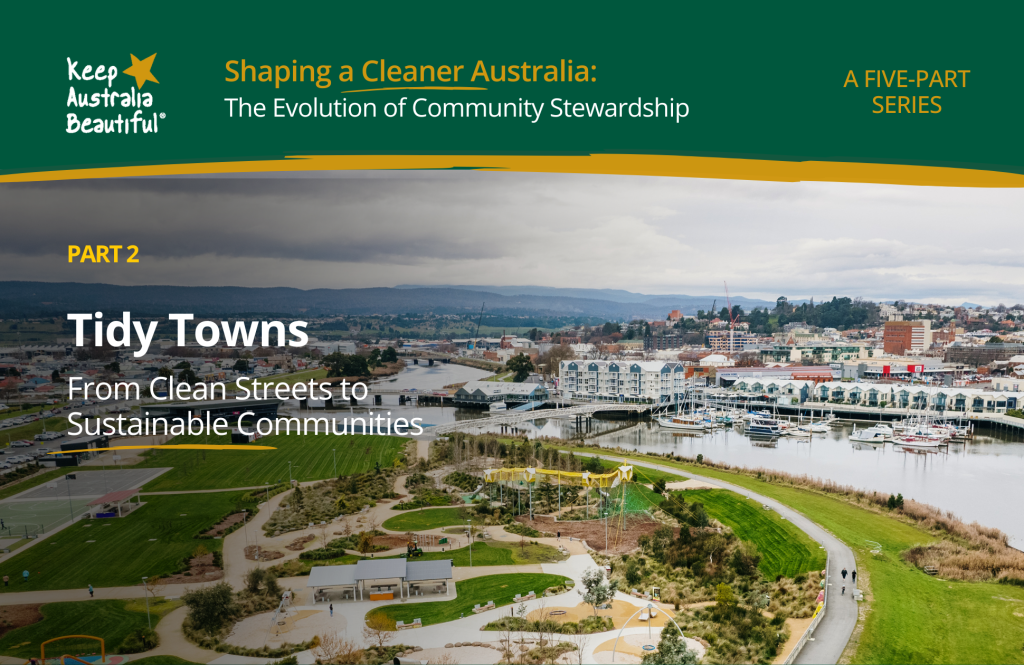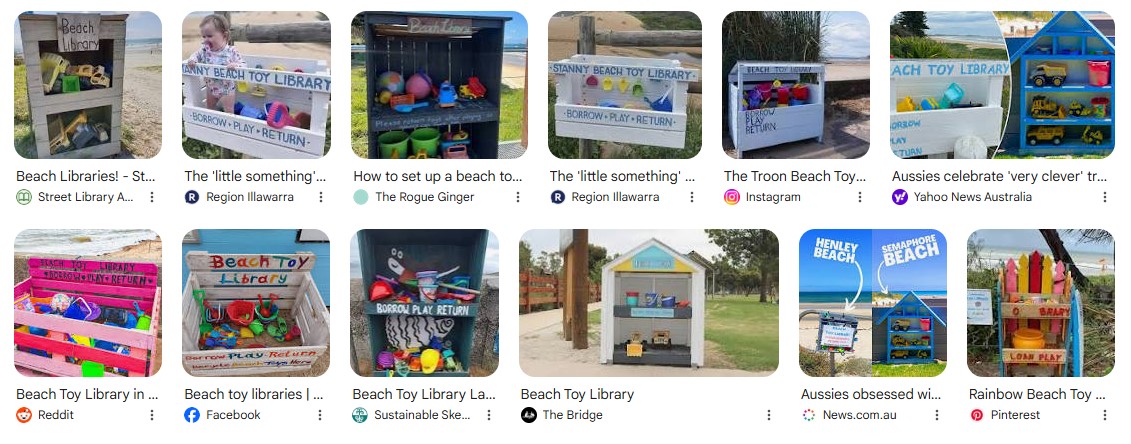
Part 1 – Our Foundation
The early days
When Keep Australia Beautiful (KAB) was founded in 1966 during the post-war boom, waste was widely viewed as an accepted by-product of modern life. Fast food culture was taking off, disposable packaging was becoming the norm and roadsides, parks and beaches were showing the visible signs of a growing throwaway society, while recycling infrastructure was virtually non-existent.
KAB emerged in this period as a community-driven response, backed by government, industry and civic partners who recognised that infrastructure alone wouldn’t solve the problem, Australia needed a cultural shift.
Inspired by similar movements overseas, Keep South Australia Beautiful (KESAB) was the first arm of KAB, born focused on litter reduction. Queensland and Victoria soon followed. A national Keep Australia Beautiful association formed 5 years later, uniting state bodies under shared values while ensuring each could grow its own locally led movements and flagship programs.
Fun fact: Keep Australia Beautiful WA is the only KAB arm that operates as a government body.
Shifting culture through community pride
During the 1960s to 80s KAB’s mission focussed primarily on civic pride, community responsibility and beautification. KAB was one of the earliest examples of social marketing for the environment.
Behavioural economics didn’t become part of the mainstream conversation until the early 2000’s, so KAB’s posters, slogans, ads, community clean ups and competitions were revolutionary in shifting Australian culture to view litter as not just waste, but a reflection of social values and respect for one’s environment.

The birth of tidy towns and national awareness
The KAB Tidy Towns Awards began in 1968 in Western Australia as a beautification competition to promote tidy and presentable towns. Over time, the awards evolved to reach beyond just tourism to encourage, motivate and celebrate sustainability achievements across rural and regional Australia. The Tidy Towns name has always been synonymous with community pride, cohesion and above all community action
It was in 1972 when Prime Minister Gough Whitlam announced the first KAB week, “Live without Litter Week”, asking Australians to get behind the first national anti-litter week to keep our environment clean. It was the first time all states were encouraged to coordinate activities, messaging, and local events under one national banner.

Beyond Litter: Civic Identity and responsibility
This was about more than litter. It was about identity – and what it means to be a good citizen and a proud Australian. From the suburbs to the bush, schools, councils and local volunteers became custodians of KAB’s message “If you care about your community, you keep it beautiful”.
KAB’s work pioneered techniques that governments now rely on to shift behaviour at scale. While the challenges have changed, one thing has not: the belief that every Australian can make a difference. Today, that early focus on behaviour is paired with work that pushes for better systems – not just better citizens.
Looking Ahead
This is just the first chapter of our story. In Part 2, we’ll explore how the Tidy Towns movement grew from a simple beautification initiative into a nationwide platform for sustainability leadership – empowering local communities to lead Australia’s environmental transformation.
WRITTEN BY: Rosie Starr (KAB Content Creator – Volunteer)










